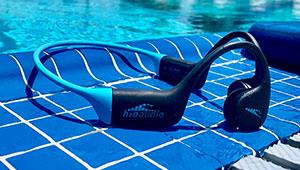Plan Description
Let's look at the plan in general. Saturday and Sunday workouts are long ones, with training hours building throughout the 13 weeks. If your work or life schedule does not allow for long weekend workouts, the system allows you to easily shift the workouts to a different day.
The initial weekend cycling workout lasts for 1 hour, 30 minutes and builds to 5 hours two weeks prior to the race. The long run begins at 1:30, building to three hours in week 11. Swimming begins at 1:00 and builds to 1:30—not as much growth as cycling and running.
In the first four weeks of training, workout time increases to build overall endurance. Intensity stays fairly low. If you are swimming with a masters group, try to have the coach include at least one 1,000-yard steady swim. Your long, weekend swim should have a main set in the 1,000- to 1,500-yard range.
The fourth week is a rest week. Then, in the second four weeks, the weekend-training volume continues to grow. For swimming, include at least one 1,650-yard steady swim, rest 2 to 3 minutes then immediately swim another 500 to 800 yards. On Saturdays, make the main set of the swim workout in the 1,500- to 2,500-yard range.
Because weekend workouts are the main focus, there are more days of rest during weeks five, six and seven to allow for recovery. By the end of week seven, you'll train a total of 8 hours over the two weekend days.
The weekend total training hours continue to build to about 9:30 by the end of week 11. Include at least one steady swim—with minimal rest—around 45 minutes to 60 minutes. On Saturdays, make the main set of the swim workout in the 2,000- to 3,000-yard range. Include some open water swims if a safe situation for practice if available.
The long run on Sunday of week 11 will be the last long workout before reducing training volume. Weeks 12 and 13 are designed for recovery and to fill your muscles full of glycogen. Short workouts with quick accelerations are designed to keep your arms and legs feeling fresh. WARNING: Do not be tempted to increase training volume during weeks 12 and 13.
While Training for an IRONMAN...
If you're getting tired, it is OK to:
- Totally skip one low-intensity workout and rest instead.
- Reduce the Saturday bike by up to 30 minutes or the Sunday run by 15 minutes.
- Do an entire medium-intensity workout within a lower heart rate zone.
If your Masters swimming group meets in the evening and you run in the morning that's fine. Stick to your specified workout, however, if doing a bike/run brick.
There is no absolute minimum number of hours you can train and still complete the IRONMAN. The more you cut training hours, the longer and more torturous the race will be.
Be careful not to start "stacking" workouts on top of each other if you miss one. Missing several workouts during the week can't be made up in a couple of days on the weekend.
There is no absolute minimum number of hours you can train and still complete the IRONMAN. The more you cut training hours, the longer and more torturous the race will be, and you put yourself at greater risk for injury.
Training for an IRONMAN is intended to keep you burning fuel at an aerobic rate. This is when you are trying to teach your body to be an efficient fat-burning machine. When you get into the heart-rate zones near lactate threshold, your body prefers to use more glycogen as fuel, as opposed to fat and oxygen. At the same time, short bouts into sprint-pace hear-rate zones will not send you into flameout status. Although heart-rate monitoring is a good tool, it is not a precise measure of aerobic metabolism. A few beats either side of the zones won't be a problem.
Going the Distance
Training for an event like this requires a commitment to proper nutrition and especially hydration. For workouts over an hour long, you'll need to consume about one water bottle per hour and a minimum of 150 to 250 calories per hour. You can find more information on hydration here.
Training for an IRONMAN can be an extremely rewarding and life-changing journey. However, it requires a strong commitment and some sacrifices. Ultimately, I want you to be successful.
Over the years, I've received many emails and letters from people telling me about their success. The goal of an IRONMAN is possible, you just need to make it a reality.
 READ THIS NEXT: IRONMAN Triathlons That Won't Break the Bank
READ THIS NEXT: IRONMAN Triathlons That Won't Break the Bank
- 2
- of
- 2









Discuss This Article